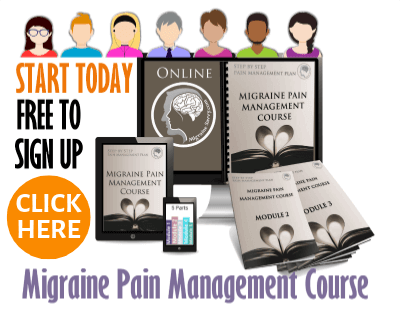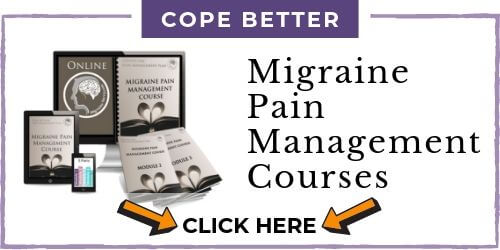- Home
- Alternative Treatments
- Chinese Cure for Migraine Headache
COMPLETE MAGNESIUM SUPPORT
My Top Choice - Magnesium Breakthrough - The ONLY supplement with all 7 essential magnesium types in one formula. Most only have 1-2 types, leaving you deficient.
Chinese Cure for Migraine Headache: Learn Ancient Healing Secrets
When Western medicine fails, a Chinese cure for migraine headache offers hope to those of us battling relentless pain. My journey into understanding this holistic approach began with personal desperation and a quest for relief beyond conventional treatments. I loved it so much; I studied it for years.
Traditional Chinese Medicine (TCM) offers a radically different perspective on migraine headaches. Unlike Western medicine's symptom-focused approach, TCM views migraine as a complex interplay of internal energy, organ function, and holistic body balance.
While there isn’t a cure for migraine, you may find relief by integrating TCM practices such as acupuncture, herbal medicine, and dietary changes into your routine. Here’s how TCM approaches migraine management with practical tips, ancient healing remedies and recipes for you to try.

Contents
- Understanding Migraine Through the Lens of Chinese Medicine
- The Energetic Roots of Migraine Pain
- TCM Treatment Strategies for Migraine Management
- Seasonal Alignment: Spring Cooking Tips
- Chinese Cure for Migraine Headache - 5 Healing Recipes
- Timing Matters: The Energy Clock
- Combining TCM with Modern Approaches
- Recent Articles
Understanding Migraine Through the Lens of Chinese Medicine
Traditional Chinese Medicine views migraine headaches as a result of imbalances in the body's energy (Qi) and internal organs, particularly the liver. Symptoms such as intense headaches, irritability, and eye pain are linked to "Liver Fire Blazing Upwards," which reflects an overactive liver channel.
The 'cure' is to douse the liver fire and focus on supporting the organ.
Once the organ gains its strength back, the symptoms stop.
Key Symptoms in TCM:
- Liver Fire Symptoms: Headaches, irritability, bitter taste in the mouth.
- Energy Imbalance: Sensitivity to light and sound, constipation.
- Meridian Connection: The liver channel opens at the eyes, explaining eye pain as a warning sign.
These symptoms aren't random; they're communication from your body's intricate energy systems.
The Energetic Roots of Migraine Pain
Liver Meridian: The Migraine Pathway
The liver meridian, which opens at the eyes, plays a crucial role in migraine development. My own experience of eye pain as an early warning signal perfectly aligns with this ancient understanding. This isn't coincidence - it's a sophisticated system of bodily communication.
 Chinese Medicine for Migraines: Relief Tips
Chinese Medicine for Migraines: Relief TipsTCM Treatment Strategies for Migraine Management
Acupuncture and Acupressure
Acupuncture improves blood flow and balances energy in the liver channel, reducing pain intensity and attack frequency. Try self-guided acupressure techniques to manage symptoms at home. Explore routines targeting migraine pressure points to supplement professional treatment.
 Chinese Herbs for Migraine Headaches
Chinese Herbs for Migraine HeadachesHerbal Remedies
TCM uses herbs to alleviate migraine symptoms:
- Corydalis (Yan Hu Suo): A natural analgesic used for centuries.
- Dosage: Start with 1 gram of extract granules or 5 grams of raw herb boiled as tea.
Tip: Avoid during pregnancy and consult a practitioner for tailored advice.
Dietary Intervention: Food as Medicine
Chinese medicine doesn't just treat symptoms - it uses food as a healing tool. Specific foods can support and rebalance your body's energy:
Liver-Supportive Foods
- Strawberries
- Asparagus
- Berries
- Buckwheat
- Cabbage
- Celery
- Garlic
- Quinoa
- Sour foods (see next cooking section)
Gallbladder-Nourishing Choices
- Chicken
- Peach
- Leek
- Artichokes
- Green beans
- Beetroot
- Carrots
- Endive
- Fennel
- Kale
- Mustard greens
- Nettles
- Olive oil
- Parsley
- Radish
- Sweet potato
- Nuts
- Beans, and lentils
- Watercress
The Element is Wood, and the Taste is Sour
WANT HELP WITH FOOD ?
MIGRAINE PAIN MANAGEMENT COURSE
There's an 8-week food experiment in my Migraine Pain Management Course. The first module is free >> click here for more
Seasonal Alignment: Spring Cooking Tips
Spring corresponds to the Liver/Wood element in TCM. Incorporate stir-fried green vegetables and sour foods like lemons or pickles to enhance liver health.
Strawberries are good for the liver in Spring. Use asparagus, berries, buckwheat, cabbage, carrots, celery, garlic, onion, leek, sesame seeds, quinoa and amaranth.
Leverage seasonal ingredients like asparagus, garlic, and sesame seeds.
Springtime and Stir Fry

Chinese Cure for Migraine Headache - 5 Healing Recipes
1. Umeboshi Plum Remedy
This ancient remedy can help neutralize migraine energy. The technique:
- Eat 1/4 plum every 20 minutes at migraine onset or
- Combine with kuzu tea for enhanced effectiveness (recipe below)
- Use rice malt for additional balance
Kudzu tea:
- Dissolve 1 umeboshi plum in hot water with a teaspoon of kuzu (also known as kudzu) root. Drink every 20 minutes at migraine onset.
Umeboshi plums are a common Chinese cure for migraine headache. Umeboshi plums neutralize extremes, so ¼ eaten every 20 minutes at onset may help abort the attack. I personally like to drink a nice hot cup of kuzu (Japanese arrowroot powder) tea with an Umeboshi plum in it.
Depending on how I am feeling, I use 1 teaspoon to 1 tablespoon of kuzu dissolved in a few tablespoons of cold water first and then boiled in a cup of water in a saucepan. Then I put the plum in or if I am feeling the need for sweet, I add just a little (1/4 t) rice malt or rice honey.
You can get them here, so you know you're buying quality >> umeboshi plums and kuzu.
2. Hot Apple Juice for Deep Inside Headaches
An easy Chinese cure for migraine headache, for deep inside headaches, is heated apple juice or hot water with 1 tsp of rice vinegar or 1 tsp of barley malt or rice honey. I keep a jar of apple juice concentrate in my fridge so I can always make a hot apple drink.
3. Liver Stagnation Relief Drink
Even better to reduce liver stagnation try this simple yet powerful home preparation:
- 240 ml hot water
- 1 tablespoon apple vinegar
- Optional: If you live in a hot climate or experience hot flushes, try fresh lemon juice as it is considered cooler than vinegar. Fresh lemon juice has a cooling effect.
4. Daikon Radish Tea Remedy
Michio Kushi in his book Basic Home Remedies suggests Daikon Tea (p. 23). A Daikon is a mild flavored Japanese radish and looks like a large white carrot. Michio's recipe uses dried Daikon. You can use fresh, but it has a strong yin effect which may make you feel weak after 1-2 days. You can drink dried daikon for a longer period of time (2-3 months).
Instructions:
- Shred fresh daikon, or use dried
- Use 1 cup daikon to 4 cups water (1 part dried, to 4 parts water)
- Simmer 15-30 minutes
- Add a pinch of sea salt towards the end of cooking time
You can also use kombu, or Umeboshi plum instead of sea salt. Do not add sweet to this drink, it is already Yin.
 Corydalis – Yan Hu Suo - Used for centuries as the Chinese cure for migraine headache.
Corydalis – Yan Hu Suo - Used for centuries as the Chinese cure for migraine headache.5. Corydalis (Yan Hu Suo): The Migraine Herb
The Chinese herb for migraine is Corydalis – Yan Hu Suo. It is an analgesic and has been used as a Chinese cure for migraine headache for centuries.
Chinese herbs come in the dried raw form, an alcohol-based extract or tablet form.
I can recommend getting quality powder, pills or granules from Amazon or source them locally. The links here are more effective than the alcohol-based extract.
- Raw Herb Dose: 5-10 grams daily. The dried raw herb is boiled and drank as a tea.
I find pill form or extract crystal granules to be best because of the bad taste of the tea and by providing a more reliable measured dose. Although, I grew to love my raw herb tea despite the taste.
- Extract Dose: 1 gram of extract crystals equals 5 grams of raw herb.
You might want to experiment and start with the lower dose first and see how effective it is for you. Currently there are no known drug interactions with Corydalis, however, do not take it if you are pregnant.
Timing Matters: The Energy Clock
Optimize Sleep for Migraine Relief
Why Sleep Matters: According to TCM, the liver and gallbladder regenerate between 11 PM and 3 AM. Disruptions during this time may exacerbate migraine attacks.
Recommendation:
Aim to sleep before 11 PM to support liver function (filtering your blood) and reduce migraine frequency.
**Fall Asleep Before 11 pm**
Combining TCM with Modern Approaches
Experts recommend combining TCM practices with conventional therapies for optimal results. Acupuncture, herbs, and pressure points can complement medications, offering a well-rounded approach to pain management.
It can pay to experiment. Here are the links to your ingredients again:
Understanding Chinese medicine's approach to migraine treatment isn't about finding an instant cure - it's about establishing harmony within your body. Each remedy, each dietary choice is a step towards balance.
Your Next Steps:
- Explore these techniques mindfully
- Listen to your body
- Be patient with your healing journey
Remember, managing migraine is a holistic process. These ancient wisdom techniques, combined with modern understanding, offer hope and practical strategies for relief.
Disclaimer: This article provides informational guidance and should not replace professional medical advice.
For more help managing migraine, explore the Migraine Pain Management Course. The first module is free and includes food experiments to help identify personal triggers. Enroll now!
WANT MORE TIPS? Subscribe to my newsletter and follow along on Facebook and Pinterest for all of the latest updates.
ALTERNATIVE MIGRAINE TREATMENTS Related Articles
How to be more MIGRAINE SAVVY right now...
Reference: Kushi, M (1994) Basic Home Remedies. One Peaceful World Press, Beckett, Massachusetts. p. 23.

















